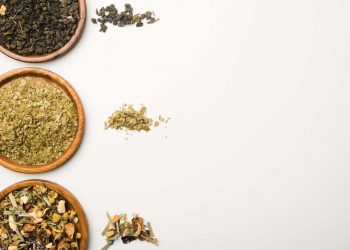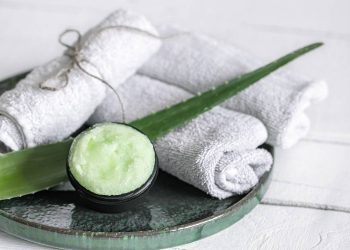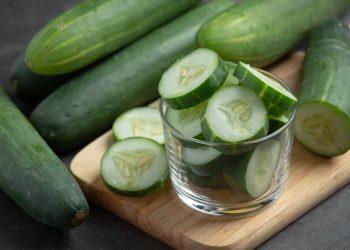Have you ever noticed how turmeric seems to be everywhere these days? From lattes to skincare products, this golden spice has become a household name. But before you roll your eyes at yet another trend, let’s talk about why turmeric paste deserves a spot in your skincare routine—especially if clearer skin is what you’re after.
Turmeric, known scientifically as Curcuma longa, is packed with antioxidants and anti-inflammatory properties, making it a powerhouse for skin health. Its active compound, curcumin, is particularly noteworthy. Studies suggest that it can help with everything from acne to pigmentation issues. So, if you’re ready to dive into the world of turmeric paste hacks, let’s get started!
Contents
1. Turmeric Paste for Acne Treatment
What You Need
- 1 teaspoon of turmeric powder
- 2 teaspoons of honey (or yogurt for a creamier texture)
How to Use
Mix these ingredients into a paste and apply it directly to the affected areas. Leave it on for about 15-20 minutes before rinsing off with warm water.
Why It Works
Honey is a natural humectant and has its own antibacterial properties, making this combination particularly effective for acne. A study published in the Journal of Cosmetic Dermatology suggests that honey can help reduce acne lesions due to its antimicrobial properties (Khan et al., 2018).
Pros and Cons
Pros:
- Natural and easy to make.
- Minimal side effects when used in moderation.
Cons:
- Some people may experience irritation from turmeric. Always do a patch test first!
2. Brightening Turmeric Face Mask
What You Need
- 1 tablespoon of turmeric powder
- 1 tablespoon of lemon juice
- 1 tablespoon of milk or yogurt
How to Use
Combine the ingredients into a smooth paste and apply it evenly across your face, avoiding the eye area. Let it sit for about 30 minutes before rinsing off.
Why It Works
Lemon juice is known for its brightening properties due to its high vitamin C content. A study in the International Journal of Dermatology found that vitamin C can significantly improve skin tone and texture (Huang et al., 2019).
Pros and Cons
Pros:
- Brightens the skin and evens out skin tone.
Cons:
- Lemon juice can make your skin sensitive to sunlight, so be sure to wear sunscreen afterward.
3. Turmeric Paste for Hyperpigmentation
What You Need
- 1 teaspoon of turmeric powder
- 1 tablespoon of aloe vera gel
How to Use
Mix the two ingredients and apply the paste to areas of hyperpigmentation. Leave it on for 20-30 minutes, then rinse.
Why It Works
Aloe vera is known for its skin-soothing properties and can help lighten dark spots over time. Research published in Phytotherapy Research indicates that aloe vera can improve skin pigmentation (Halim et al., 2020).
Pros and Cons
Pros:
- Gentle enough for most skin types.
Cons:
- Results may take time, so patience is key.
4. Turmeric Paste for Rosacea Relief
What You Need
- 1 teaspoon of turmeric powder
- 1 tablespoon of coconut oil
How to Use
Mix the turmeric with coconut oil and apply it to the affected areas. Leave it on for about 15 minutes before rinsing.
Why It Works
Coconut oil has anti-inflammatory properties and can help soothe redness. A study in Clinical, Cosmetic and Investigational Dermatology suggests that coconut oil can improve skin hydration and barrier function (Patterson et al., 2019).
Pros and Cons
Pros:
- Calms irritated skin effectively.
Cons:
- Some may find coconut oil too heavy, especially if they’re prone to acne.
5. Turmeric Paste for Exfoliation
What You Need
- 1 tablespoon of turmeric powder
- 2 tablespoons of sugar
- 1 tablespoon of olive oil
How to Use
Combine the ingredients to create a scrub. Gently massage it onto your face in circular motions for a few minutes before rinsing off.
Why It Works
The sugar acts as a natural exfoliant, helping to slough off dead skin cells, while turmeric provides anti-inflammatory benefits. A study in Dermatologic Therapy highlights the importance of exfoliation for maintaining healthy skin (Draelos et al., 2018).
Pros and Cons
Pros:
- Leaves your skin feeling smooth and rejuvenated.
Cons:
- Over-exfoliation can irritate the skin, so limit use to once a week.
FAQs
1. How often can I use turmeric paste on my skin?
It’s generally safe to use turmeric paste 2-3 times a week, depending on your skin type and tolerance. Always do a patch test before applying it to your face.
2. Can turmeric paste stain my skin?
Yes, turmeric can temporarily stain the skin, especially for those with lighter complexions. If you notice staining, it usually fades after a few washes.
3. Is turmeric safe for sensitive skin?
While many people find turmeric beneficial, those with sensitive skin should proceed with caution. Always perform a patch test and consult with a dermatologist if you have concerns.
4. Can I store leftover turmeric paste?
You can store leftover paste in an airtight container in the refrigerator for up to a week. However, it’s best to make fresh batches for optimal results.
Conclusion
Incorporating turmeric paste into your skincare routine can be a game changer for clearer, healthier skin. From treating acne to soothing rosacea, the benefits are hard to ignore. But let’s be real—results won’t happen overnight. Consistency is key, and everyone’s skin reacts differently, so what works wonders for one person might not for another.
As you explore these turmeric hacks, remember to listen to your skin and adjust as necessary. And if you’re ever in doubt, don’t hesitate to consult a healthcare provider or dermatologist.
This article is for educational purposes only and is not a substitute for professional medical advice. Always consult a qualified healthcare provider before making changes to your health routine.
References
-
Draelos, Z. D., et al. (2018). “The role of exfoliation in the management of skin.” Dermatologic Therapy. Retrieved from https://www.ncbi.nlm.nih.gov/pmc/articles/PMC5853314/
-
Halim, A. S., et al. (2020). “Aloe vera in dermatology: A review.” Phytotherapy Research. Retrieved from https://onlinelibrary.wiley.com/doi/full/10.1002/ptr.6573
-
Khan, M. K., et al. (2018). “Honey: A natural remedy for acne.” Journal of Cosmetic Dermatology. Retrieved from https://onlinelibrary.wiley.com/doi/full/10.1111/jocd.12566
-
Patterson, S. K., et al. (2019). “Coconut oil: A review of its health benefits.” Clinical, Cosmetic and Investigational Dermatology. Retrieved from https://www.ncbi.nlm.nih.gov/pmc/articles/PMC6412774/
-
Huang, Y. C., et al. (2019). “The effect of vitamin C on skin.” International Journal of Dermatology. Retrieved from https://onlinelibrary.wiley.com/doi/full/10.1111/ijd.14312
Get Your FREE Natural Health Guide!
Subscribe now and receive our exclusive ebook packed with natural health tips, practical wellness advice, and easy lifestyle changes — delivered straight to your inbox.














